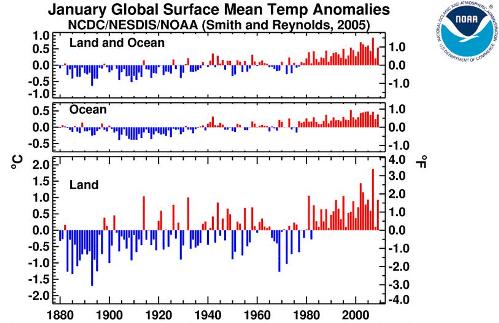Global temperatures for January
 |
| Copyright: Mat Hayward - Fotolia.com. |
No climate data is without its critics. We do not have the equipment to measure the temperature in every square kilometre of the world’s surface so we cannot be sure that global ‘averages’ are correct. Disputes about the reliability of climate data will continue. But the US Government’s National Climatic Data Center (NCDC) is one of the world’s most authoritative sources of global data.
***
Its temperature figures for January have just been reported (13 February). The month was unusually cold in the UK and in parts of the US. Some commentators, whose imagination fails to recognise that temperatures in central London or Washington DC are not typical of all parts of the world’s surface, had hypothesised that the 2008/2009 winter was particularly cold. Counter-evidence, such as the record-breaking highs in the state of Victoria in Australia was ignored.
The NCDC figures suggest that January was actually the 7th warmest on record. Let’s explore for a second what this means. (Please consult the NCDC chart below.) January 2009 continued a run of several decades in which January temperatures were always higher than the long-run average. Although January seemed very cold in the UK, for the world the land and ocean temperature was higher than any year in the entire twentieth century, although some years in the 1940s came close.
The plain fact is that UK commentators have simply lost touch with what winters used to be like. The climate change deniers base their refreshed scepticism on a few weeks of recently unprecedented snow and ice in the UK. They do not either look at records in the rest of the world, or consult historical data on UK temperatures.
These high global temperatures occurred during La Niña Pacific conditions. In an year of full El Niño when Pacific ocean temperatures are higher, we could expect an even warmer climate.
